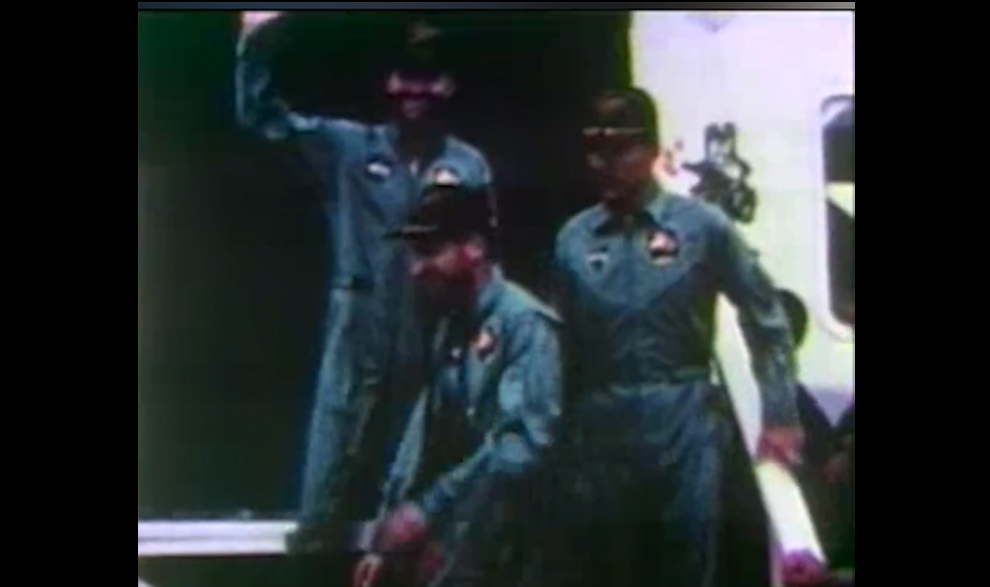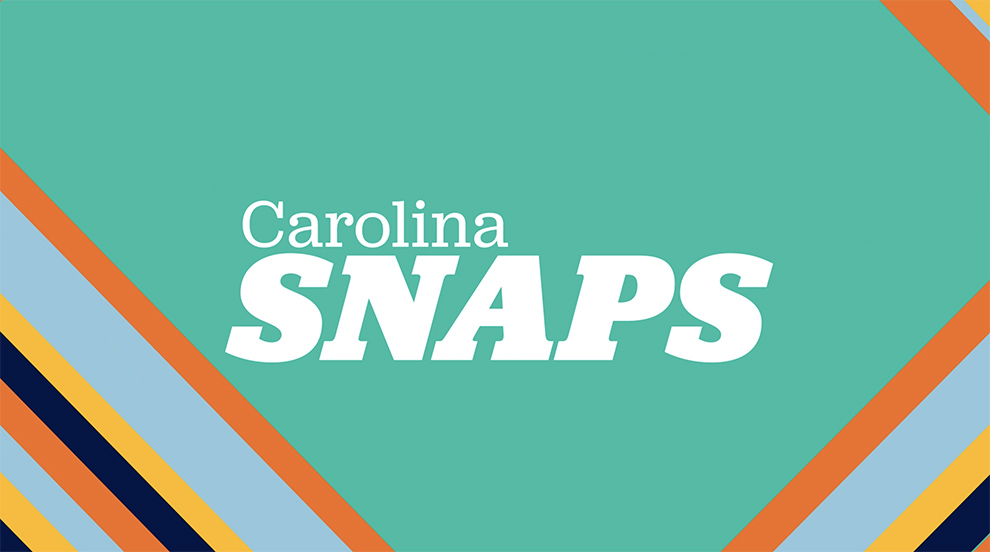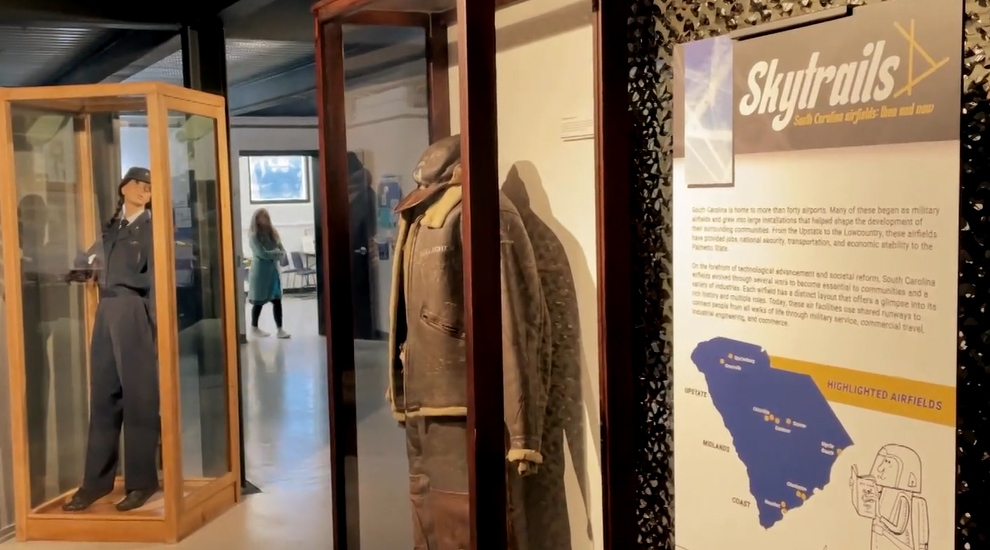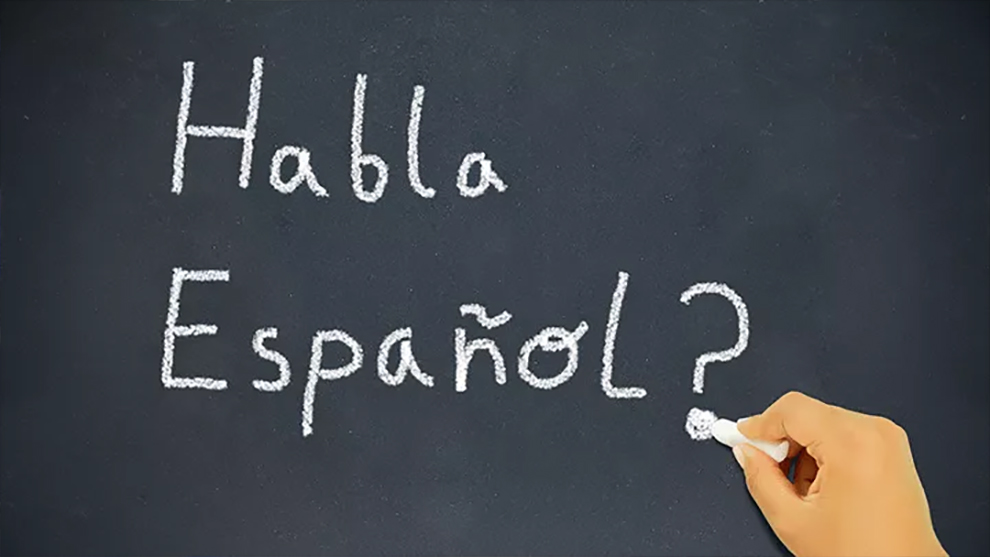
NEW ON KNOWITALL.ORG
NEW FINANCIAL LITERACY SERIES COMING SOON TO KNOWITALL!
KidsECON
The FIRST VIDEO in KidsECON is available NOW ON KNOWITALL - VIEW NOW!
Laila takes us on a tour through the grocery store. Learn the difference between a need and a want in the first episode of KidsECON.
A lesson plan has also been added. View it here!

Laila, Ella, and Jayden are taking part in a special (rogram at their school called KidsECON. Join them and their mentor, Peggy, on their adventures around the community as they learn how people spend and make money. (Grades K-3)
Now Available - Featured Content for Factoids

NASA's Apollo 13 was intended to be the third mission to land on the moon, but fate had other plans. Apollo 13 launched from Kennedy Space Center, Florida on April 11, 1970. Just three days into the mission, a routine oxygen tank "stir" caused a damaged oxygen tank inside their service module to rupture. This explosion crippled the spacecraft, and a sizeable portion of their oxygen supply was leaked out into space. In order to survive, Apollo 13's crew - Commander James "Jim" Lovell, Command Module Pilot Jack Swigert, and Lunar Module Pilot Fred Haise were forced to migrate from the Command Module Odyssey into their Lunar Module Aquarius, which became a makeshift "lifeboat." The Mission Control team in Houston worked round the clock with the astronauts to bring them back safe and sound to earth.
Apollo 13 is remembered today as a “successful failure” in that the astronauts safely returned home despite not landing on the moon.

The unthinkable happened to the "unsinkable" passenger liner R.M.S. Titanic on April 15, 1912. The second of three Olympic class ships built for the White Star Line, she was the largest man-made moving object at that time, with a length of almost 900 feet long. She departed on her maiden voyage from Southampton, England to New York on April 10, 1912. Just 4 days into her journey she struck an iceberg and sank, claiming the lives of more than 1,500 people. Thought to be lost to history, she was discovered by underwater archaeologist Dr. Robert Ballard in 1985. The Titanic tragedy remains one of the worst maritime disasters in human history.

Why Are Army Bombers on an Aircraft Carrier? | April Factoids
Here's something you don't see every day: Army bombers on a Navy aircraft carrier? You may have asked that question if you were a sailor on board one of the ships escorting the U.S.S. Hornet in early April 1942. The Hornet was carrying 16 heavily modified B-25 "Mitchell" bombers destined for Japan. Under command of Lieutenant Colonel James "Jimmy" Doolittle, the Doolittle Raiders were going to perform a feat never before attempted in history at that point: to have land-based bombers take off from an aircraft carrier.
On April 18, 1942, just 132 days after the infamous attack at Pearl Harbor, the Doolittle Raiders made history by successfully attacking Japan's capitol city. While the damage done to Tokyo was minimal, the daring raid boosted American morale and showed the world that challenging the might of imperial Japan was possible.

Carolina Snaps
Recent additions include:
There are many well-known African American entertainers from South Carolina, who made history. Let’s find out about a few:
Clayton “Peg Leg” Bates worked as a child laborer in a cotton mill, where he lost his leg. This didn’t stop the Fountain Inn native from establishing a successful career as a tap dancer on Broadway. He appeared on the Ed Sullivan Show at least twenty-two times.
Dizzy Gillespie, a Cheraw native, taught himself how to play the trumpet at age 12. He recorded his first music album at age 20. His unique style played a key role in the rise of bebop and modern jazz.
Born in Orangeburg, Eartha Kitt had a tough time landing jobs due to her refusal to perform for segregated audiences. But she prevailed and went on to become well known for her song, “Santa Baby” and her role as Catwoman on TV’s Batman.
Dr. Mary McLeod Bethune is hailed as one of the most influential African American educators and Civil Rights figures, during the first half of the 20th century. Born on a cotton farm in Mayesville, SC., Mary was the 15th out of 17 children born to former slaves. After years of teaching, Mary decided she wanted a school of her own.
She moved to Daytona Beach, Florida, and for just one dollar, and fifty cents, she built The Bethune Institute for Girls. The school later merged with the nearby Cookman Institute for Boys, and became what we know today, as historically Black Bethune-Cookman University.
An advocate for women rights and civil Rights, Mary was appointed as a national adviser to President Franklin D. Roosevelt, becoming a member of his Black Cabinet.
Orphaned at the age of six, Maude Callen, became an “Angel in Twilight” to many as she singlehandedly brought health care to a poverty-stricken community. After becoming orphaned, Maude went to live with her uncle, who also was the first black doctor in Tallahassee, Florida.
Influenced by her uncle, Maude studied nursing at Florida A&M and later at Tuskegee Institute. Upon graduating, she answered the call to become a medical missionary in Pineville, South Carolina in 1923.
As a nurse and midwife, Maude provided invaluable medical services to thousands of people in rural Pineville and the surrounding area of Berkeley County. This “Angel in Twilight” delivered around 800 babies and trained almost 400 women as midwives.
Lake Jocassee is a 75,000-acre reservoir outside of Salem, South Carolina and is considered the jewel of the Appalachian Mountains.
Did you know Darla Moore was the first woman featured on the cover of Fortune Magazine and was listed as one of Fortune’s “50 Most Powerful Women in Business”? Born and raised in Lake City, South Carolina, Darla Moore grew up on the family cotton, soybean and tobacco farm.
In 1982, Moore received her MBA from George Washington University. She would move on to become one of the most successful and highest paid women in the banking industry. In 1993, Moore began to invest in her home state, focusing on education.
In 1998, she announced a significant donation to the University of South Carolina’s Business School. The Darla Moore School of Business became the first business school in the United States to be named after a woman.
Towering over three thousand five hundred feet, Sassafras Mountain is the highest point in the state of South Carolina.
South Carolina historian Mary C. Simms Oliphant became the first woman to receive the Order of the Palmetto. Born in Barnwell County, Mary C. Simms Oliphant was the granddaughter of novelist and historian William Gilmore Simms.
In 1916, only a few weeks after graduating from college, the state superintendent of education asked her to update her grandfather's state history to use as a textbook. Written in 1840, Mary had quite a bit of history to add.
Her revisions were adopted and revised every five years until 1932 when Oliphant presented her own school textbook, The Simms History of South Carolina. For almost 65 years, various editions of Mary Simms Oliphant’s history textbooks and books were made available to South Carolina students.
Julia Mood Peterkin’ stories of plantation life and realistic African American characters captured the world’s attention. Julia Mood was born in Laurens County on Halloween in 1880. Her mother died when she was two years old. After graduating from Converse College, she moved to Calhoun County to become a teacher.
In 1903, she married William George "Willy" Peterkin, who was a rich cotton planter. The Lang Syne Plantation employed about 400 African American workers. This community’s culture became a source for Julia’s stories.
The scholar W.E.B. DuBois stated, “She is a Southern white woman, but she has the eye and the ear to see beauty and to know truth." Julia won the Pulitzer Prize for Novel/Literature in 1929 for her third novel Scarlet Sister Mary.
Robert Smalls was a former slave and Civil War hero who made a significant impact on American history. Born into slavery in Beaufort, South Carolina in 1839, Smalls worked on the docks and was trained as a sailor.
In 1862, he commandeered a Confederate transport ship, the Planter, and sailed it to freedom with his family and other enslaved people on board. He then turned the ship over to the Union navy and became one of the first African American captains in the U.S. Navy.
Smalls later served as a South Carolina state legislator and a U.S. Congressman, fighting for voting rights and education for African Americans. He was a powerful voice for equality and civil rights, and his legacy continues to inspire today.
Elizabeth Evelyn Wright’s dream of establishing a school in South Carolina would come true in 1897. Elizabeth Evelyn Wright, a graduate of Tuskegee Institute, had a deep desire to open a school where black boys and girls could be educated in industrial and agricultural work.
Despite her determination, she faced many obstacles which included arsonists burning her schools down three consecutive times. Not giving up, Wright made attempts at five different locations before she settled in Denmark, SC. The Denmark Industrial School was successfully founded April 14, 1897.
Her most generous benefactor, Ralph Vorhees, supplied $5,000 for the purchase of 280 acres and the construction of a schoolhouse. In 1902, the name was changed to the Voorhees Industrial School. Today, this HBCU is known as Voorhees University.

Reconstruction 360 - New Module - Now Available on KnowItAll.org!
Module #5 - The Black Codes
Reconstruction 360 uses a 360 degree video platform as a storytelling device that lets the audience step inside pivotal Reconstruction events. By clicking on icons within the 360 video the user can access short documentaries that offer the perspectives of multiple characters, historians and descendants. Reconstruction 360 also includes lesson plans, curriculum standards and primary documents.
This module, The Black Codes, deals with the laws passed by southern whites shortly after the Civil War that limited the rights of Black people in an attempt to establish restrictions similar to slavery.
View Module #5 - The Black Codes - on KnowItAll here.
View the 360 Experience - Module #5 - The Black Codes - here.
SEGMENTS
The Black man in this jail cell has been locked up for refusing to sign a labor contract. Under the Black Codes he is considered a vagrant. Freedpeople had to sign labor contracts to work for whites, or be convicted of vagrancy and fined
The wife of the jailed freedman has come to the jail to support her husband in his contract dispute with the white landowner. In 1865 and 1866, following the example of Northern Blacks, freedpeople in the South held protests against racist laws such as the Black Codes.
Like most former Confederates, this landowner resents the authority of U.S. Army officers and the Freedmen’s Bureau. Fearful that their agricultural economy would collapse without the free labor of the enslaved, white elites were determined to take back self-rule and control Black people.
The Freedmen’s Bureau helped create labor contracts that were supposed to be fair to both parties, but in many cases established conditions not much better than slavery. This system became known as sharecropping, and it lasted well into the 20th century among both Black and white farmers in the South.
The growth of Black Codes in the South made it clear that freedpeople needed the support and protection of the federal government. On March 3, 1865 Congress established the Bureau of Refugees, Freedmen, and Abandoned Lands, also known as the Freedmen’s Bureau, to provide relief and help formerly enslaved people become self-sufficient.
There was little or no universal or public education in the Antebellum South. Only wealthy elites went to school, and most poor whites were illiterate. They remained ignorant of politics at the national level, helping to preserve slaveholders’ grip on political and economic power.
This scene was shot inside the Orangeburg County Jail, also known as the Pink Palace, in Orangeburg, South Carolina. The jail was built in 1860 with offices on the first floor and cells for prisoners on the second floor.

South Carolina Military Museum's New Exhibit: “South Carolina Airfields: Then and Now”
The South Carolina Military Museum’s newly unveiled “South Carolina Airfields: Then and Now” exhibit aims to tell the story of the Palmetto State’s contributions and involvement in the field of aviation. Many of South Carolina’s active airports – from the Upstate to the Lowcountry have ties going all the way back to the early 1900s.
FIND THE RESOURCES YOU NEED FOR APRIL ON KNOWITALL.ORG!
-
Earth Month
-
School Library Month
-
National Poetry Month
-
Financial Literacy Month
-
SAAM (Sexual Assault Awareness Month) Day of Action
-
National Public Health Week
-
Week of the Young Child
-
National Library Week
-
and MORE!
Visit our APRIL FACTOIDS for links to an array of resources!
These include National Zoo Lovers Day, National Unicorn Day, National Former Prisoner of War Recognition Day, National Farm Animals Day, National Pet Day, National Submarine Day, International Day of Human Space Flight, National Peach Cobbler Day, Look Up at the Sky Day, National Dolphin Day, National Orchid Day, International Bat Appreciation Day, National Ellis Island Family History Day, Earth Day, International Chernobyl Disaster Remembrance Day, Yom HaShoah, International Jazz Day and more!
Factoids for the FULL YEAR are available HERE!
FEATURED IN APRIL ON KNOWITALL.ORG
EARTH MONTH & EARTH DAY
Earth Month was established in April 1970 and is non-political. It is a month intended to develop momentum for a full year's worth of work on improving the environment. Visit our Environmental Awareness Collection to find out how you can be involved in helping our planet!
EXPLORE OUR LIBRARIES, LITERATURE & LEARNING COLLECTION!
Knowitall features an extensive collection of literacy resources! Explore by SERIES or TOPIC—or select only your faves!
- American Writers
- Authors of Children’s Books
- For Student Writers
- For Young Readers
- Illustrators
- Journalism, Broadcasting & Communications
- Poets & Poetry
- Poets Laureate Collection | All Series
- S.C. Authors
- Shakespeare
* South Carolina educators, please register for an account on KnowItAll.org to gain access to all of the content that is available to SC teachers.
Knowitall has produced Q&A video profiles with national authors and illustrators who visit South Carolina. These interview opportunities are provided by partners like the South Carolina State Library.
Storytelling should be a part of a student’s educational experience because it is a literary activity, a listening activity, a means of transmitting values, and a means of appreciating cultural diversity.
The storytellers in the Baker’s Dozen lessons were influenced by Augusta Baker, a well-known librarian and storyteller who worked in the New York Public Library for many years and taught storytelling at colleges across the country. These thirteen, renowned national and local storytellers were taped in the studios of SCETV as they told their stories in front of elementary-age students who asked the storyteller questions about their story and the art of storytelling.
Take a closer look at types of media like photography, radio, film, and television. Record your answers to the Write About It questions in a notebook or a digital document.
This series serves as a comprehensive contextualized support for developing writing skills in preparation for high school. Episodes can be used within and across curriculum areas to support many different applications of writing, from lyrics to persuasion to technical reports. In each program, students are challenged to approach a writing assignment in different ways. Strategies for organizing information and structuring personal schedules to complete assignments are depicted. Real-life settings where different writing styles are employed are carefully woven into the stories. Cooperative learning is emphasized. The new CLUB WRITE KIDS is a prequel to this series. Club Write is distributed by AIT (Agency for Instructional Technology).
Conversations with S.C. Writers
SCETV brings into the studio well-known South Carolina writers to share a little about their careers, writing process and more!
Grammar Pitfalls | Standard Deviants TV
The Standard Deviants clear away confusion and identify the most common grammatical errors.
Native Islanders share their folklore and history through storytelling and singing.
Idella Bodie’s Ghost Tour: A Writer’s Guide
Offers students and teachers a personal view of the writing process.
South Carolina and national storytellers perform interesting stories and talk about the craft of storytelling.
This series primarily teaches letter recognition and sound association to young children. In addition to teaching the common sounds associated with the letters of the alphabet, programs also help children sight-read common words and build confidence and excitement for reading. Every episode introduces some important cross-curricular content that can be developed into a broader learning activity in class. Other lessons focusing on letter combinations and reading rules can be found in LETTER TV II and LETTER TV III. Letter TV is distributed by AIT (Agency for Instructional Technology).
Literary Tour of South Carolina
Students meet nationally recognized authors who call South Carolina home. They learn about the writing process, making characters come alive on the page, creating the plot, and how important research is to any story, both fiction and non-fiction.
Produced by the S.C. Department of Education in conjunction with ETV, this phonetic series is designed as a review of decoding skills. Mama Phonics and her consonant and vowel children present phonetic rules in a fairy-tale manner. They meet "Detective WordFinder" and help him pronounce words.
Mary Boykin Chesnut | Idella Bodie’s SC Women
Mary Boykin Chesnut kept a diary during the Civil War. Events dramatized in this film were extracted straight from her diary.
National Book Month | Periscope
This collection celebrates books!
National Poetry Month: A World of Poetry | Periscope
Poetry is a language spoken around the world. Although you may not regularly sit down and read poetry, chances are you are exposed to some form of it every day.
Designed to teach sign language to teachers and parents of deaf children, this innovative series can also teach signing to classroom students. Through animation, real-life segments, and direct instruction by the series’ hosts, students can learn the fundamentals of this language in order to communicate with friends and classmates who use signing as their primary means of communication.
Pulitzer Prize Winners in South Carolina
Three programs that feature Pulitzer Prize honorees from South Carolina, including:
Celebrating Pulitzer Commentary with Kathleen Parker and Jim Hoagland, moderated by Charles Bierbauer.
Celebrating Pulitzer Novelist Julia Peterkin.
Celebrating Pulitzer Public Service Journalism with the Charleston Post and Courier.
Standard Deviants TV: Punct Rock covers the apostrophe, the dash, the hyphen, and answers the question, "What's Punctuation?"
Reading, Safety & Internet Safety Minutes
Two of these short programs provide a fun, unique way to encourage middle and high school students to read for fun as well as for information. The other four attention-getting vignettes are designed to help students understand how to be safe at school, at home and online. School Resources Officers talk about what is the safe behavior in each situation.
Scholastic Children's Stories are grouped into six collections: Families, Feelings & Friendship, Fantasy & Imagination, Favorite Animal Stories, Folk Tales & Fables, Multicultural, and Seasons & Nature.
Shakespeare | Standard Deviants TV
The Standard Deviants get up-close and personal with Shakespeare's famous plays, Hamlet and Macbeth.
Storytime with SCETV is an online series that promotes the love of reading and literary stories connected to South Carolina. In this series, Friends of ETV share and read literary favorites, many of which are connected to South Carolina. Packages include the reading and at least one supplemental teaching and learning activity.
Recommended for preK-3, Tune Up to Literacy encourages literacy using original songs by composer/lyricist/educator Dr. Al Balkin, composer who wrote music for The Hobbit, and several off-Broadway children’s musicals. The programs musically introduce and reinforce concepts such as punctuation and sentence construction.
Please note: This content was created as part of a college-level course. Some of the content may contain adult themes or language not suitable for all audiences.
For this workshop series, 15 major talents in contemporary literature met in a forum with well-known author William Price Fox and USC creative writing students. Each writer discussed personal writing methods, furnishing insights into the highly individualized process of literary creation. Featured writers include George Plimpton, James Dickey, James McPherson, John Gardner, John Hawkes, John Irving, Kurt Vonnegut, Nora Ephron, Pauline Kael, Reynolds Price, Stephen Spender, Susan Sontag, Tom Wolfe, William Price Fox, and William Styron.
Writers from the South Carolina Hall of Fame
South Carolina Hall of Fame honors and recognizes contemporary and past citizens who have made outstanding contributions to South Carolina’s history and progress. Writers Include Elizabeth Coker, Mary Simms Oliphant, Pat Conroy, Robert Bass, and Walter Edgar.
* South Carolina educators, please register for an account on KnowItAll.org to gain access to all of the content that is available to SC teachers.
NATIONAL POETRY MONTH - TWO COLLECTIONS ARE AVAILABLE:
POETS & POETRY
POETS LAUREATE
PLUS A SERIES:
NATIONAL POETRY MONTH: A WORLD OF POETRY from Periscope!
More Poets! (culled from various series on KnowItAll.org)
- Archibald Rutledge (Writers from SC Hall of Fame)
- James Dickey (Writers Workshop)
- Kwame Dawes (Literary Tour of SC)
- Marjory Wentworth (Literary Tour of SC)
- Reeds Rise from Water (Artopia)
- Singing Amazing Grace (Artopia)
- Talking About Amazing Grace (Artopia)
- Tommy Scott Young (Conversations with SC Writers)
- William Gilmore Simms (Civil War from SC Hall of Fame)
FINANCIAL LITERACY MONTH
VIEW OUR FINANCIAL LITERACY & ECONOMICS COLLECTION
VIEW OUR SERIES - PYGG E. BANK ECONOMIC$
The series of nine short lessons is about economic empowerment for youth, teaching financial literacy in a fun format. Pygg E. Bank Economic$ encourages the piggy bank theory of saving and managing money. Pygg E. Bank (character puppet star) stands as a symbol of what a piggy bank represents for the new generation of economist.
- Debt Eliminators
- Inflation
- The Money Plan
- Close Encounters
- The Personal Investment
- The Power of the Purse
- Money Mania
- Money Matters
- The Exchange
In addition, there's also this segment from Auntie Karen's Place:
Bear and Bull talk about creating a budget and how to save money.
And a lesson plan:
NATIONAL PUBLIC HEALTH WEEK
Our KNOWITALL HEALTHY! Collection is a great place TO START!
We hope you'll follow up by ACTING ON these suggestions!
TOPICS
Resources for April dates related to Health and Fitness are available here:
- Sexual Assault Awareness Month - View the resources on human trafficking and teen dating violence
- Take Down Tobacco Day of Action - View the resources related to tobacco
- Love Your Produce Manager Day - Learn more about healthy eating and make your plate more colorful, nutritious and delicious!
- National Student Athlete Day - View our resources on Fitness
- National Walking Day - - View our resources on Fitness
- World Health Day - View the KnowItAll Healthy! Collection
YOM HASHOAH - Days of Remembrance
Visit the Holocaust Remembrance Collection on KnowItAll.org
The internationally recognized date for Holocaust Remembrance Day corresponds to the 27th day of Nisan on the Hebrew calendar. It marks the anniversary of the Warsaw Ghetto Uprising. Yom HaShoah in English is known as Holocaust Remembrance Day to commemorate and honor the loss of approximately six million Jewish people during the second World War. It is a national holiday in Israel and celebrated by Jewish people all over the world.
The United States Congress established the Days of Remembrance as the nation’s annual commemoration of the Holocaust. Each year state and local governments, military bases, workplaces, schools, religious organizations, and civic centers host observances and remembrance activities for their communities.

BE SURE TO CHECK OUT OUR SPANISH TRANSLATIONS IN THIS COLLECTION!
Habla Español?
TO GET THE MOST OUT OF KNOWITALL, EXPLORE THESE AREAS!
KnowItAll Series
Knowitall.org features over 9,000 mobile-friendly videos, worksheets, and interactives for preK-12.
KnowItAll Collections
Find topical content and lessons grouped together for your convenience.
Curriculum and Lesson Plans
Visit our Educators page for Lessons and Outcomes, and view our Featured Lessons. All lessons have been created and vetted to address the South Carolina State Department of Education's academic standards and include cross-curricular activities, lesson progressions, assessments, and all the media and content links needed to teach the standards down to their indicators.
KnowiItAll Factoids by the Month
Visit our Factoids each month - or even more often! You may be surprised at what you’ll find!
KnowItAll Blog
Find featured content and helpful information on using KnowItAll throughout the month!
What’s New on KnowItAll? On the home page, click on the yellow magnifying glass, then in the line below - click again on the magnifying glass - to the right of the blank field that says "Search." The search results will display our newest content at the top of the page. All content is posted in order from oldest to newest, with the newest at the top. Or you can click HERE for immediate access.
Questions or comments?
We welcome your questions and comments! We would love to hear from you!
The Learning Continues on KnowItAll.org!
Please share our blogs with your friends and let them know what you found to be helpful on KnowItAll.org!
We encourage you to link to KnowItAll.org on your teacher pages and on school and district websites.
Thank you!